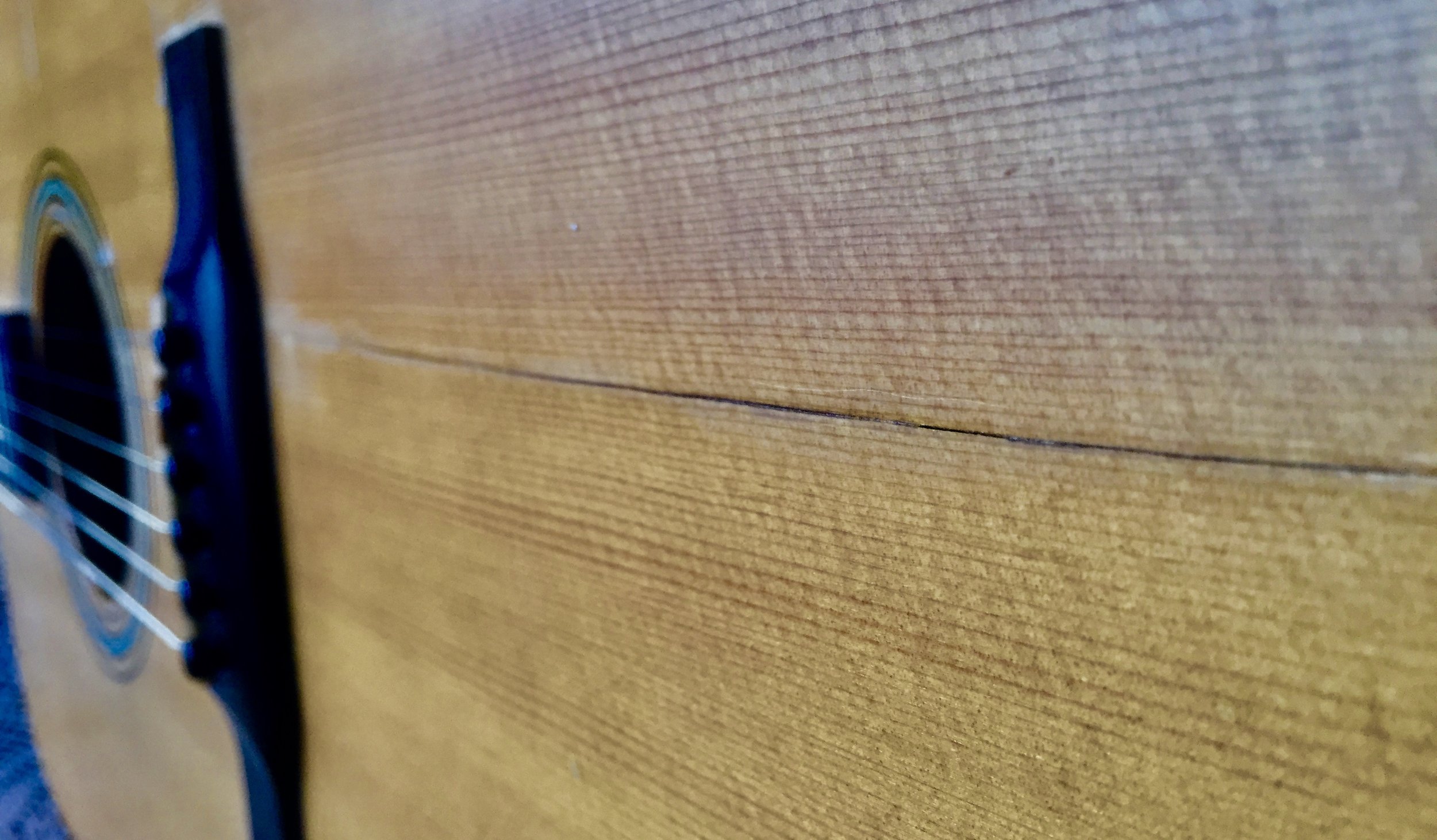Beginnings
There was a time when guitars beautified -or littered, depending on viewpoint- many spaces in my home. There would be a couple in the living room, one in the kitchen, dinning room, always one by the bedside, for those middle of the night song inspirations! I love having my guitars near at hand, as I find I will play often, even if for just a few minutes at a time, if the guitar is readily accessible. This worked wonderfully until kids came along; toddlers and precariously perched fine instruments do not mix, so into their respective cases they went.
One cannot deny the aesthetic appeal of an elegant acoustic guitar; sensuous lines, glorious woods and alluring adornments. Their presence, scattered all over the house, were thus tolerated. It is, however, hard to come to the defence of beauty, when referring to the graceful lines of a hardshell case, regardless of how well proportioned it may be. So, every time I wanted to play, I had to go to the closet, or under the bed, pull out the case and bring it to the room I wanted to play in, unlatch 6 clasps and pull out the instrument, and do the reverse when my 10 available minutes were up…….. not exactly hard labour, but enough of a bother to deter me from playing a lot of the time.
So it came to be, that the wall hanger found a couple of acceptable mounting places in our home, and I was on my way. One particular guitar (my favorite), got taken off and put back on a kitchen wall a great many times over the next few years....... until it started showing hints of neglect. I ignored the signs of distress; messed up intonation, protruding frets and small splits in the top and back and simply considered these as part of owning an acoustic guitar in Northern Canada. Until the day when my faithful steed was pushed beyond it’s ability to cope and while at a rehearsal, a large ‘pop’ was heard and felt; there was a crack in the side, from the neck all the way to the heel joint. It was an ugly gap almost a quarter inch wide and just like that, my beautiful instrument was gone.
Sadly, it met it’s demise because I abused it by leaving it hanging, unprotected, on the wall of my kitchen. I had expected the ‘humidity’ in that room from the cooking that went on, would be sufficient to protect my guitar. It wasn’t, and so I allowed my arid winter home to literally suck the life out of a beautiful instrument.
Hard lesson to learn, but I vowed it would never happen again.
So was born the idea of Guitar Humidors. I built one for myself, and then a second one and then my friends noticed, requests came, and here we are.
h
Not a sight any of us ever want to witness ……… woods that make up fine instruments, simply aren’t able to withstand drastic humidity changes
Who and Why
We provide guitar owners a way to safeguard and preserve their instruments, while showcasing them in alluring cabinetry. We use the finest of materials and a tradition of hand craftsmanship that shines at every level of construction.
We like to say that we are “Lovers of noble planks” and that we strive for “Gracefully finessed woods”. It’s true! We don’t offer specific models per say, because each case is different in some small way from another.
Often, a plank will dictate how and where it is to be used. A burl, or section of ‘imperfect‘ lumber is often what ends up being the stunning focal point of the cabinet. One of our trademarks is the use of highly figured lumber, such as Curly Maple, Walnut and figured Cherry from the Appalachian Mountain regions of the USA. Mahogany and Sapele also figure prominently in the cabinetry. An appreciation of the aesthetic leads us to imported exotic woods from all over the world.
Buying entire logs for their exceptional figure is expensive; the more stunning the grain, the pricier the log, -but the efforts often gift us with displays of dazzling beauty. We want the eye enticed by the elegance and symmetry that surrounds and protects the guitar, as much as the instrument itself.
We are fortunate to have good rapport with our suppliers and spend hours going through piles of lumber, looking for remarkable and spectacular planks. Once acclimatized in the shop, every effort is made to match and coordinate lumber for our cabinets. Texture, grain patterns and orientation, shadings, etc, are all considered at length when planning the layout. Book matching is considered at every opportunity, although slip matched material can also have dramatic effect.
On wall hung units, Baltic Birch plywood is used in the backs for strength and stability in securing the cabinets to the wall with french cleats. The plywood is covered with shop re-sawed veneers that are typically 2 - 3mm thick. For floor standing models, the backs have panels of solid wood, floating within mortised frames, to allow for seasonal expansion and contraction.
African Padauk, Spalted European Beech
The dust from this Padauk ruined every piece of clothing it came in contact with
Resawn Padauk, resting




















